Eukaryotic Cell Study Guide
Check out awesome, educational VR rooms on Inspirit’s mobile app (available for iOS and Android devices)🤩
Interactive Simulation
Launch Eukaryotic Cell Simulation!
Youtube Video
Check out the corresponding VR-based Room on our Inspirit iOS App, which you can download here!
Introduction
All cells fall into one of two categories: prokaryotic and eukaryotic. Prokaryotic Cells and Eukaryotic Cells are kind of like fraternal twins–they have a lot of similarities, but they also have some big differences. We place a cell into one of these two categories based on a singular piece of criteria: the presence or absence of a nucleus. Eukaryotes have them, and prokaryotes don’t.
Now there are a bunch of other characteristics that set them apart from one another, but if you read the title, you know that today we’re only focusing on eukaryotes. These nucleus-having cells are further divided into two categories: plants and animals (fungi and protists too, but that’s for another day). Once again–fraternal twins. They’re more similar to one another than prokaryotes and eukaryotes, but they still aren’t quite identical.
We’ll begin by going over the features and organelles found in both plant and animal cells: the nucleus, mitochondria, endoplasmic reticulum (ER), Golgi apparatus, ribosomes, lysosomes, and vacuoles. After that, we’ll touch on the structures that are only found in plant cells: chloroplasts, the central vacuole, and a variety of specialized plasmids. Let’s start with the nucleus.

Lesson Objectives
- Learn about what organelles are present in eukaryotic cells.
- Briefly understand their structures and functions.
👋 If you want to learn about the organelles of plant and animal cells in more detail, check out are Cell Structure and Plant Cell Structure study guides.
Shared Organelles
Nucleus
Like we discussed, the Nucleus is the organelle that sets eukaryotic cells apart from the prokaryotic ones. Inside the nucleus you’ll find deoxyribonucleic acid (or if you’re short on time, DNA). Besides storing DNA, the nucleus controls all of a cell’s activities, including metabolism, growth, protein synthesis, and cell division. It’s composed of 4 parts–the nuclear envelope, nucleoplasm, nucleolus, and chromosomes.

Mitochondria
Mitochondria are membrane-bound organelles that are composed of an outer membrane, inner membrane, intermembrane space, and mitochondrial matrix. They generate most of the energy a cell uses to function (we’ll spare you the powerhouse spiel), store calcium, and activate apoptosis if they decide a cell is too old or has ceased to function (no organelle would be complete without a hint of ageism, right?).
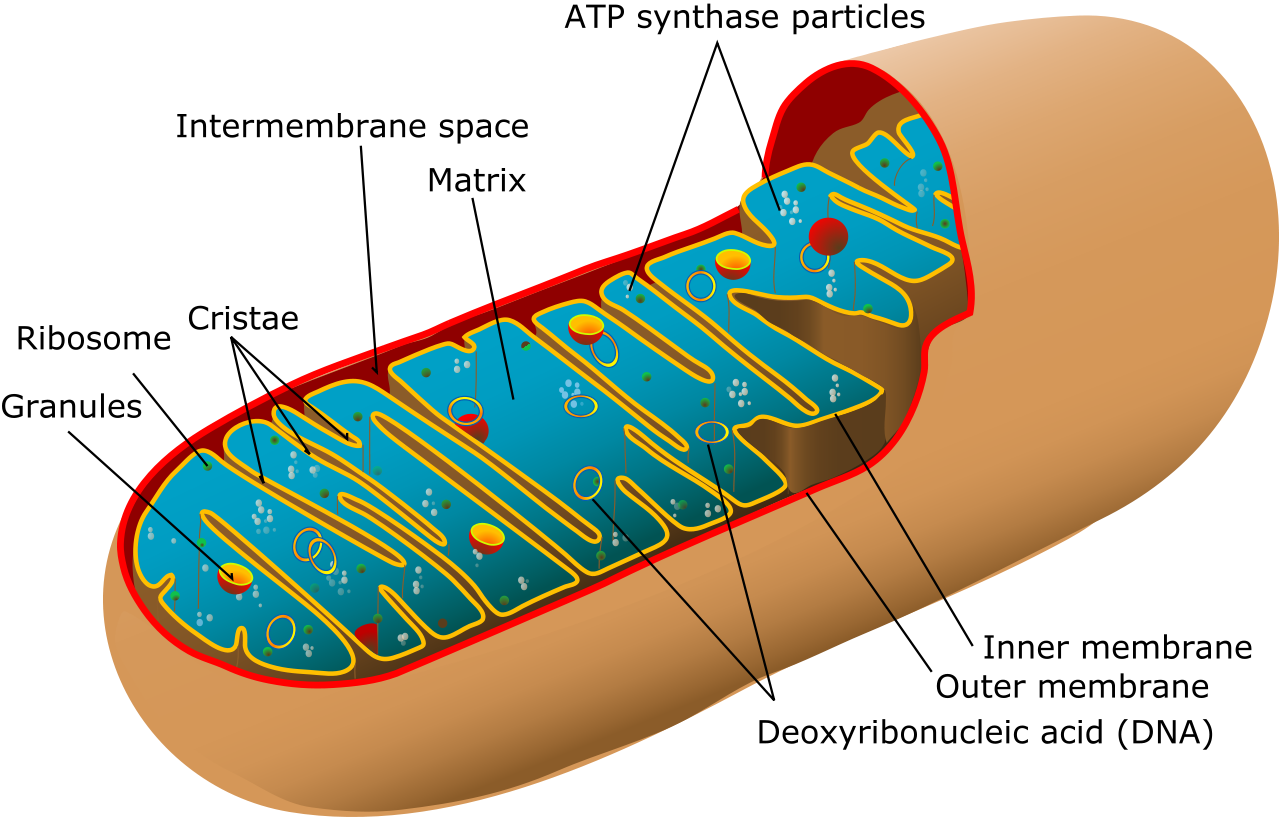
Endoplasmic reticulum (ER)
Up next we have the Endoplasmic Reticulum (ER), an organelle made up by a network of membrane-enclosed sacs called cisternae that attach to the nuclear envelope. Cisternae are formed by the ER’s membrane folding in on itself, making their shape similar to candy ribbon. Each cisterna is shaped kind of like a cup, and the empty space in the middle is called the Lumen. The endoplasmic reticulum is an important manufacturing site for both lipids and proteins, many of which are made for and exported to other organelles. It is divided into two regions: the rough ER and the smooth ER. Let’s discuss below.
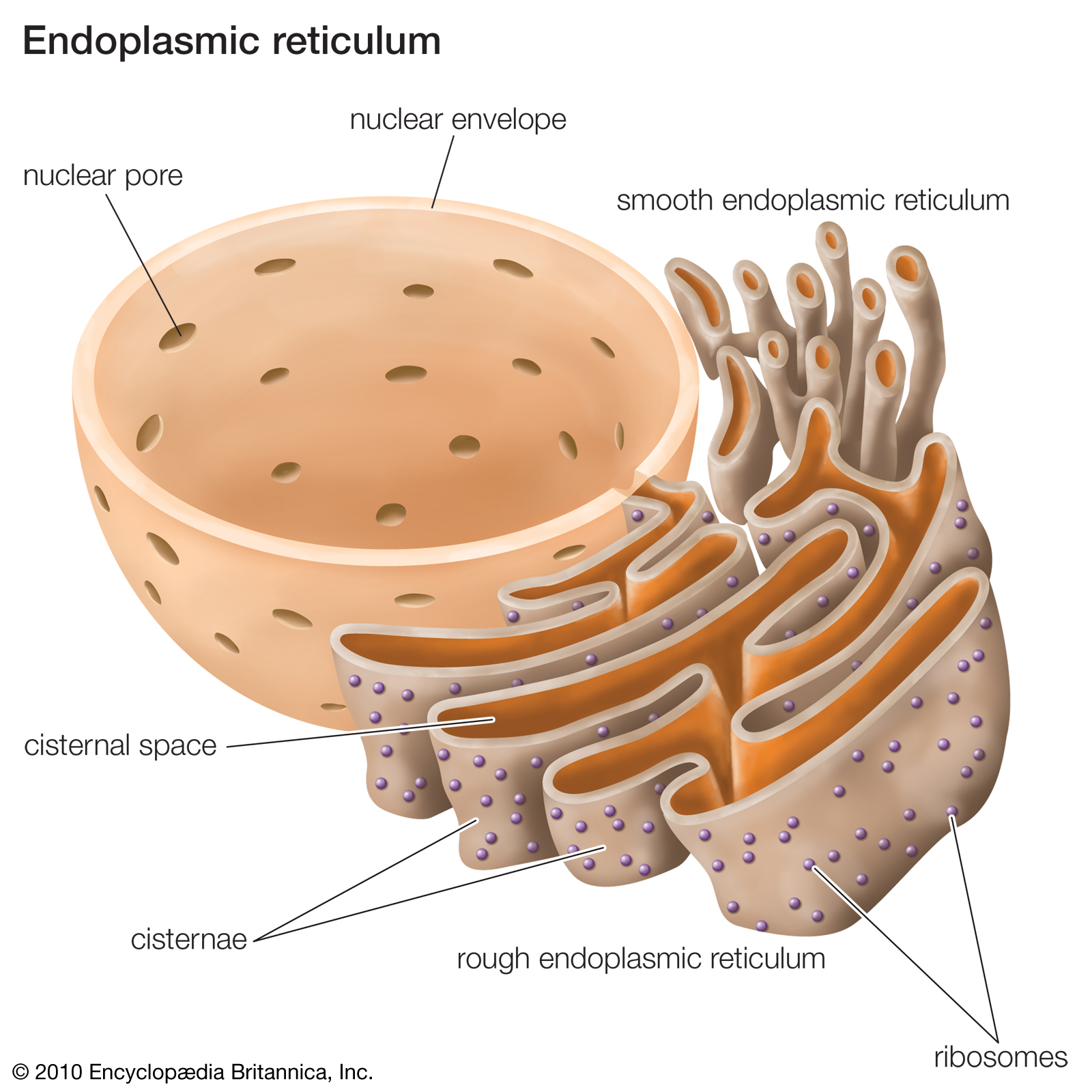
The Rough ER
The Rough ER is where a cell produces proteins and membranes. It works with ribosomes (we’ll get to those) to make proteins that are destined to be either part of the membrane or released from the cell. Ribosomes translate mRNA and use it to synthesize polypeptide chains. When synthesis is complete, they embed themselves in the rough ER’s membrane and release the chains, which will move to the lumen and fold into their final protein form. Once completed, the proteins are tagged, indicating they are ready for transport to the Golgi apparatus, an organelle that we’ll discuss shortly.
The Smooth ER
The Smooth ER is the other region found within the endoplasmic reticulum, distinguished from the rough ER by the fact that there aren’t ribosomes plastered over every inch of it. It’s job is to produce lipids and steroids, both of which are really important for energy storage, membrane structure, and communication. It’s also in charge of calcium regulation. When the nervous system triggers a muscle cell, the smooth ER releases calcium ions that cause the muscle contract. It’s last important job is detoxifying the cell by removing the waste created by both metabolic processes and any drugs in your system.
Golgi apparatus
We mentioned the Golgi apparatus (aka Golgi bodies) when discussing the proteins produced in the rough ER. The Golgi Apparatus is composed of four to eight Cisternae that are not interconnected like they are in the endoplasmic reticulum. It’s essentially a post office, modifying, packaging, and delivering proteins and lipids wherever they need to go in the cell.
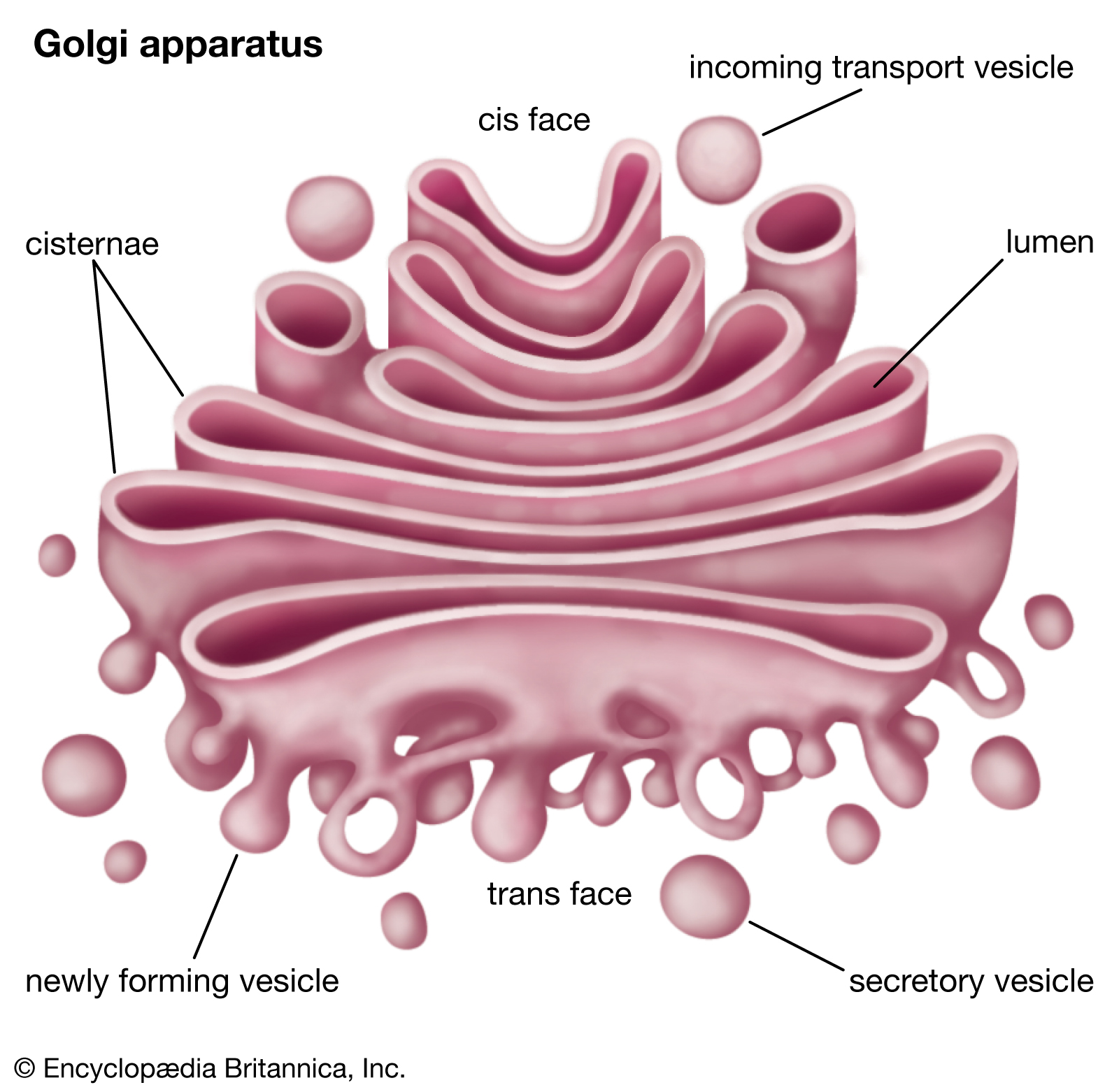
Ribosomes
Ribosomes are organelles composed of RNA molecules and proteins that carry out the process of protein synthesis. They have two subunits–one large and one small. When not synthesizing proteins, these subunits remain unattached. During protein synthesis, the two units combine and work together as one to translate mRNA and form a polypeptide chain from amino acids which will eventually become a functional protein.

👉 To learn more about ribosomes, check out this study guide here!
Lysosomes
Lysosomes are the recycling plant of a cell. They’re filled with tons of enzymes that can (and will) break down any molecule that crosses their path and use their parts elsewhere. All of those enzymes can only function in an acidic environment, which is why lysosomes stay around a pH of five. This is actually a safety mechanism–the pH of the rest of the cell is 7, so if a lysosome were to burst, the enzymes released would cease to function before they had the chance to digest anything else that the cell still needed.
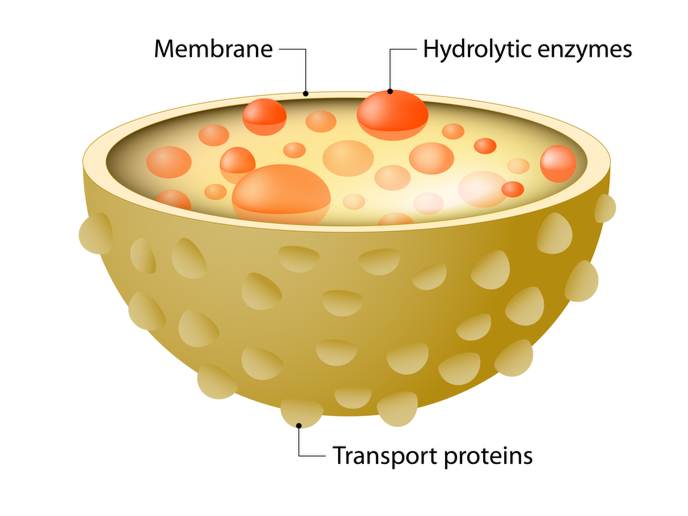
Vacuole
Vacuoles are the storage lockers of a cell. They’re small, membrane-bound sacs containing either fluid or gas (like water or CO2) that are mainly used for storing random materials from the rest of the cell that either need to be used in the future or removed from the cell. Their main functions are removing and storing parts of the cell that have broken down due to age or damage, removing and storing harmful products to protect the cell from damage, and storing water and nutrients like lipids, proteins, and carbohydrates.

Plant-Specific Organelles
Chloroplasts
Chloroplasts convert solar energy to chemical energy in a process called Photosynthesis, during which plants convert solar energy, carbon dioxide, and water into glucose and oxygen. They contain an outer membrane, intermembrane space, inner membrane, stroma, and a thylakoid system, which is pretty similar to the structure of mitochondria. Both mitochondria and chloroplasts are thought to have evolved through the endosymbiosis theory, which is probably why they look so alike.
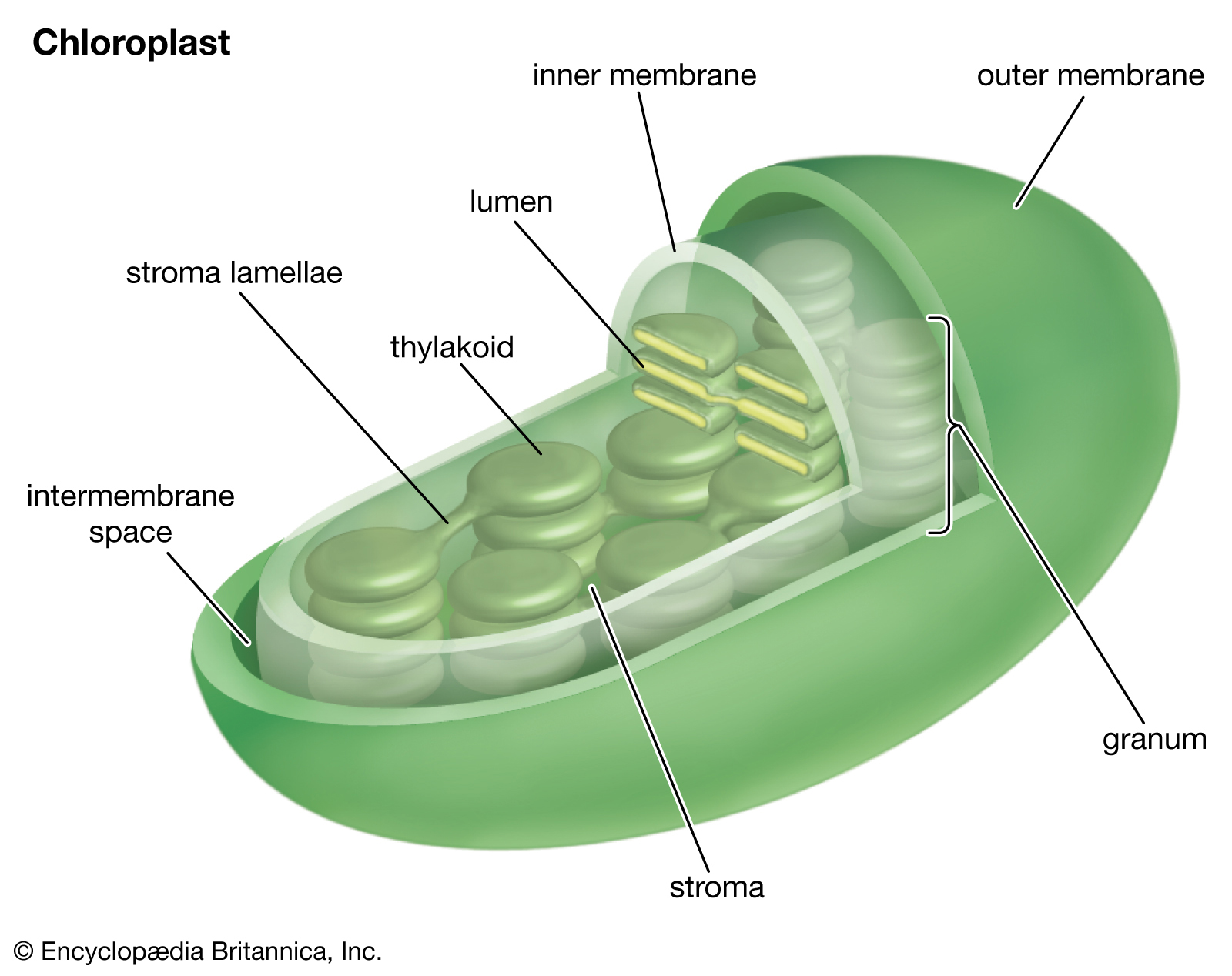
Specialized Plastids
There are many specialized plastids found in plants that aren’t found in animals. Today we’ll go over about three of the major ones other than chloroplasts: leucoplasts, chromoplasts, and gerontoplasts.
Leucoplasts are non-pigmented plastids found in the non-photosynthetic parts of a plant (like the roots). They synthesize amino and fatty acids, and store starch, lipids, and proteins.

Chromoplasts and gerontoplasts both originate from chloroplasts. In some situations, chloroplasts transform into Chromoplasts, plastids that produce and store pigments other than chlorophyll. This occurs during the development of things like flowers, fruits, and the changing leaves when fall comes around. When chloroplasts go into senescence, they become Gerontoplasts, plastids that convert the chloroplasts into different organelles to be used within the cell.
Central Vacuole
A vacuole is an organelle that stores and disposes of various substances, and both plants and animals have them. However, instead of the tiny vacuoles found in animal cells, plant cells have one large Central Vacuole surrounded by a membrane called the Tonoplast and filled with a fluid called cell sap. It’s primary purpose is to store water and maintain Turgor Pressure, the force exerted by stored water against the cell wall. Turgor pressure changes as water moves into or out of a plant cell via diffusion during osmosis.

✅ Conclusion
The main difference between prokaryotic and eukaryotic cells is that the eukaryotic cells have a nucleus while prokaryotic cells do not. The nucleus, plasma membrane, ribosomes, cytoplasm, mitochondria, endoplasmic reticulum, Golgi apparatus, lysosomes, vacuoles, and the plant-specific chloroplasts, central vacuole, and specialized plastids are all components of a eukaryotic cell, each with its own specific function that plays a major role in the functioning of the cell.
We hope you enjoyed studying this lesson and learned something cool about the Eukaryotic Cell! Join our Discord community to get any questions you may have answered and to engage with other students just like you! Don’t forget to download our App and check out our awesome VR room for this guide – we promise, it makes studying much more fun 😎
Sources
-
“Welcome to CK-12 Foundation | CK-12 Foundation.” https://www.ck12.org/book/cbse_biology_book_class_xi/section/9.4/. Accessed 11 Nov. 2021.
-
“Eukaryotic Cells | Biology I.” Courses.lumenlearning.com, courses.lumenlearning.com/sanjacinto-biology1/chapter/eukaryotic-cells-2/. Accessed 11 Nov. 2021.
